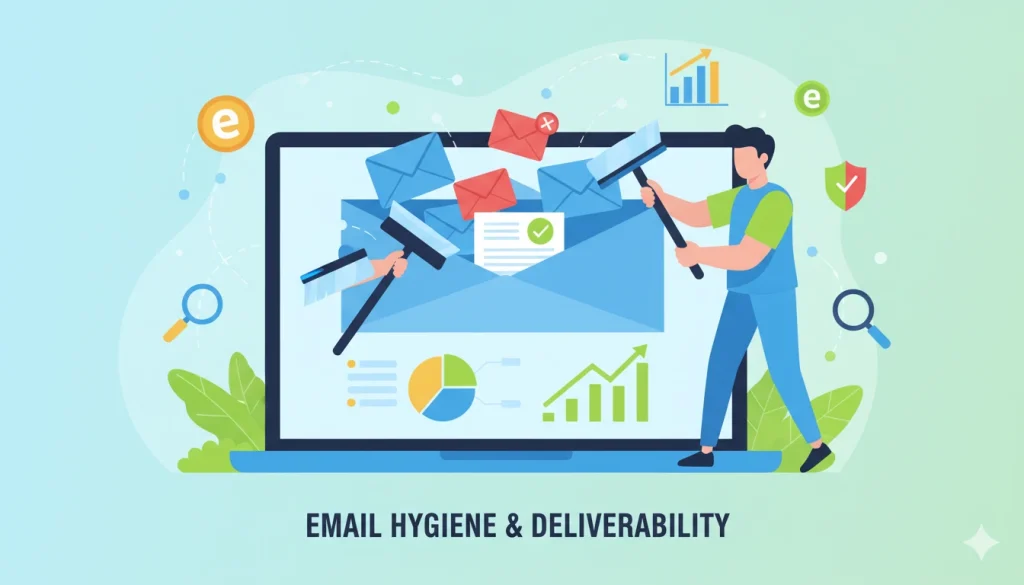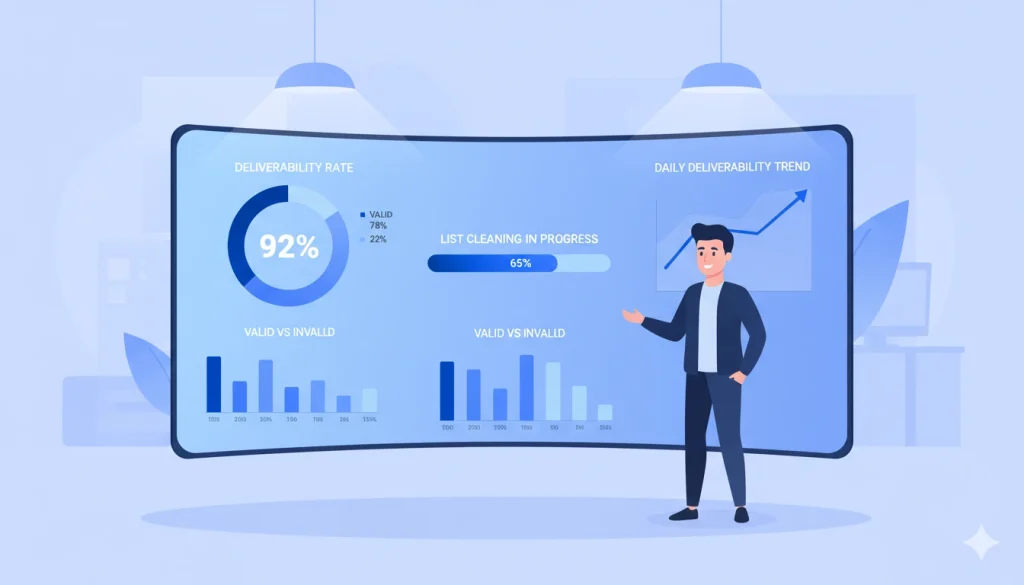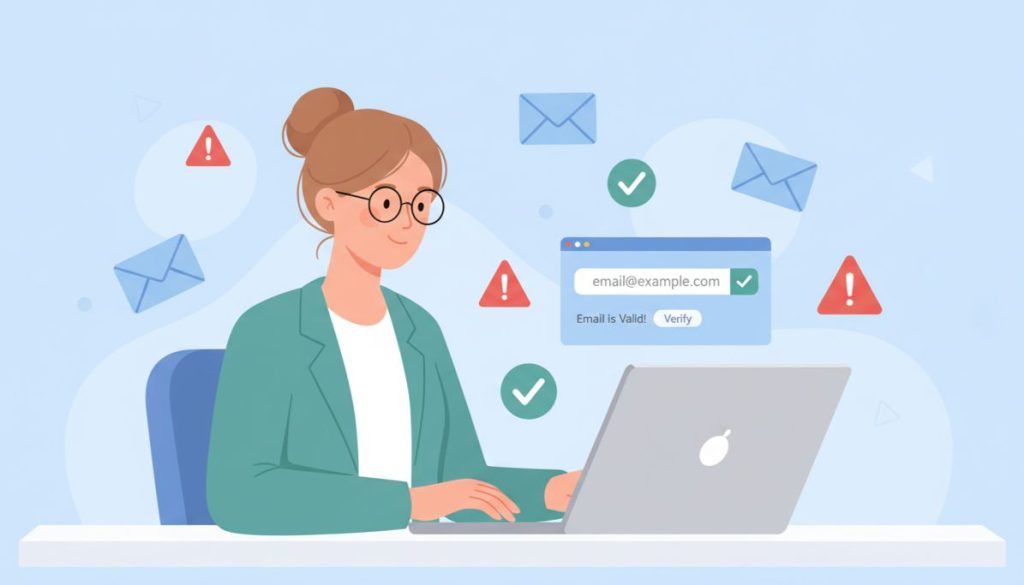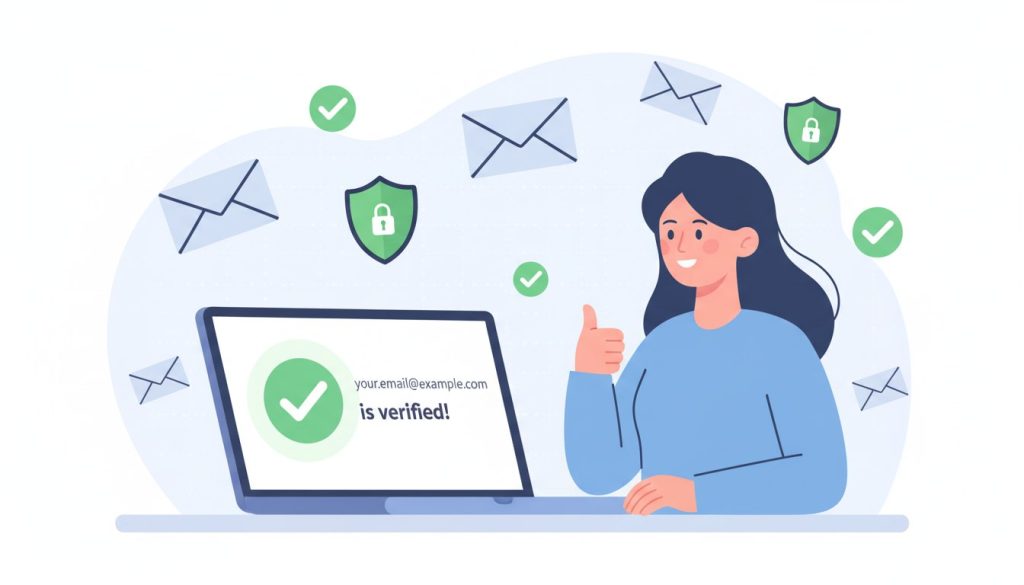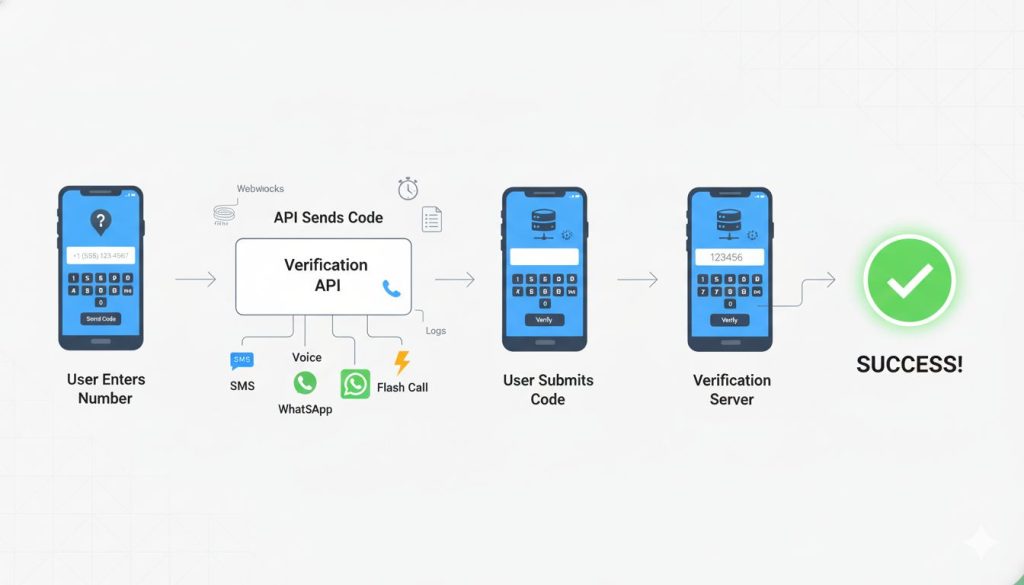Keeping your email list clean isn’t just good housekeeping. It’s the secret ingredient behind strong deliverability, healthy engagement, and trust with your audience. When you send to outdated or inactive contacts, you’re not just wasting effort—you’re hurting your sender reputation and deliverability rates without realizing it. Good email hygiene keeps your list accurate, active, and responsive so your messages land where they should: in real inboxes. In this guide, we’ll walk through smart, practical ways to build and maintain a clean list that drives better results and helps you connect meaningfully with the people who actually want to hear from you.
What Email Hygiene Really Means
Good email hygiene goes far beyond deleting a few old contacts. It’s about keeping your communication ecosystem healthy and trustworthy. Think of it as taking care of your brand’s reputation while making sure your audience stays genuinely interested in your content.
Beyond “Cleaning Your List” – It’s About Respecting Your Audience
Email hygiene is about sending messages to people who want them and removing invalid email addresses, unengaged email addresses, and duplicate email addresses that clutter your subscriber list. When you regularly perform email list hygiene, you maintain data accuracy, improve delivery rates, and protect your domain from spam traps that can seriously harm your performance.
A clean list also reduces spam complaints and improves inbox placement. It ensures that your email campaigns reach real, active users—not problematic email addresses that never open your messages. When you verify email addresses and remove inactive subscribers consistently, you not only protect your list but also strengthen every part of your email marketing strategy.
Healthy lists don’t just happen; they’re managed. Every checkup, cleanup, and verification helps you send emails that perform better and connect with real people who want to hear from you.
Why Good Email Hygiene Makes (Or Breaks) Deliverability
Your sender reputation determines whether your emails reach inboxes or the spam folder. That’s why email hygiene directly affects your email deliverability and overall campaign success.
Understanding How ISPs Judge Your Reputation
Mailbox providers and email service providers evaluate how subscribers interact with your messages. They watch for signs of healthy engagement—like consistent opens, click through rates, and low bounce rates. If they detect hard bounces, spam complaint rates, or a high number of inactive addresses, your emails could be flagged or filtered.
The Hidden Cost of a Dirty Email List
Neglecting hygiene can negatively impact your entire email program. You’ll waste resources sending emails to invalid addresses or multiple accounts that don’t exist anymore. Over time, your domain reputation suffers, and even your most engaged subscribers might stop seeing your content.
To avoid this, practice regular email list cleaning and perform spam testing before launching major email marketing campaigns. It’s not just about avoiding spam—it’s about safeguarding your sender trust and keeping your email deliverability strong for every campaign you send.
Building a Clean List from Day One
The best way to maintain a healthy email list is to build it right from the start. When you collect email addresses with care, you save yourself countless problems later.
Use Double Opt-In to Filter Out the Noise
A double opt in process helps confirm that each new contact genuinely wants to join your list. It prevents fake email addresses and role accounts from slipping in through your signup form. Every verified subscriber adds quality to your list and improves the performance of future email marketing campaigns.
Set Expectations Early with Clear Permission Practices
Be transparent from the start. Tell people what kind of emails they’ll receive, how often you’ll send emails, and include a one click unsubscribe option. This not only keeps your subscribers informed but also reduces unwanted emails and spam complaints.
If you want to grow your list organically, focus on attracting genuinely interested subscribers through value—not volume. Setting these boundaries upfront ensures that the people who opt in will stay engaged, making your email program more consistent and reliable in the long run.
Monitoring Engagement to Spot Problems Early
Even the most careful list builders need to keep an eye on engagement. Subscriber behavior changes, and that’s perfectly normal. The key is to notice when email engagement starts to dip and act before it damages your performance.
Track What Really Matters: Opens, Clicks, and Conversions
Monitoring engagement metrics gives you real insight into how your audience feels. Look at open rates, click-through rates, and conversions to spot low engagement trends early. If some contacts stop responding for months, they might be unengaged subscribers worth targeting in a re-engagement campaign before you remove subscribers from your list.
Segment Before You Remove
Not every quiet contact is lost. Some might have changed email clients or check emails less often. Segment inactive addresses separately and try tailored solutions like updated subject lines or special offers. If they still don’t respond, start removing subscribers to maintain list hygiene.
By keeping tabs on engagement, you ensure that every contact on your subscriber list adds value. It’s the most practical way to protect your sender reputation, maintain strong inbox placement, and keep your email campaigns performing at their best.
Re-Engagement Campaigns: The Gentle Way to Say “Are You Still Interested?”
Even with great hygiene, some subscribers will drift away. The right re-engagement campaign can bring them back and help you understand what went wrong.
Crafting the Right Re-Engagement Message
When you reach out, keep your message short and friendly. Use clear subject lines and honest value reminders. You could offer a new resource, discount, or update to spark their interest. The goal is to reconnect with people who once cared about your content and might just need a nudge.
To protect your email security, always verify that your links are safe and your messages are free from phishing attempts. Run them through antivirus software before launching the campaign. This keeps both you and your subscribers safe from phishing emails that can damage trust.
Knowing When to Let Go
If you don’t get a response, it’s time to remove them. Removing inactive subscribers keeps your clean email list performing well and helps maintain strong engagement rates. Holding on to disinterested contacts only skews your results and can lower deliverability. Remember, it’s better to have fewer engaged subscribers than a large group that never responds.
Automate Hygiene with Smart Tools and Processes
You don’t need to do everything manually. Automation can handle most of the heavy lifting while you focus on strategy.
Leverage Automation to Stay Consistent
Automation helps email senders detect inactive contacts and problematic data sources before they affect your results. Use the best tools to regularly scan your database and remove invalid or duplicate entries. You can even set automatic cleanup schedules that keep your list healthy without constant oversight.
Automation also improves security. Combine list management with two factor authentication to protect your email accounts from unauthorized access. Never use public wi fi when handling sensitive information or managing subscriber data. It’s an easy way to reduce risk and keep your communications safe.
Integrate Hygiene Checks into Your CRM and ESP
Link your hygiene processes directly with your CRM or email service provider. That way, validation and segmentation happen automatically. These systems can flag unresponsive contacts, identify unverified addresses, and support you in maintaining a consistently clean database. The more proactive your system, the smoother your campaigns run—and the stronger your sender reputation becomes.
Beyond the Basics: Advanced Hygiene Techniques for Modern Marketers
Once you’ve mastered the fundamentals, it’s time to step up your game. Advanced hygiene keeps your email program healthy and ready to scale.
Use Suppression Lists and Feedback Loops Wisely
Suppression lists prevent you from sending to unsubscribed or invalid contacts. Feedback loops from mailbox providers can also alert you when users report your messages as spam, giving you an early warning to fix any issues before they grow. These tools not only safeguard your campaigns but also protect against spam filters that hurt your delivery.
Validate Data and Improve Engagement
Make it a habit to validate your list regularly using reliable data sources. As you keep cleaning, focus on increasing engagement through relevant, timely communication. Review your messages for grammatical errors and unclear language before sending. This keeps your brand professional and trustworthy.
A clean email list offers key benefits beyond deliverability—it helps you manage risk, build loyalty, and stay ahead of compliance challenges. When your hygiene practices are strong, every email campaign performs better, connecting with real people and reinforcing your credibility.
Keep Your Results Strong With Email Hygiene Best Practices
Good email hygiene isn’t a one-time cleanup—it’s a steady habit that protects your sender reputation, improves deliverability, and builds trust with every message you send. When your list is full of real, engaged people, your campaigns perform better and your brand feels more authentic. Keep checking, refining, and improving your process, and your efforts will always pay off.
If you’d rather leave the cleanup to experts, our professional email hygiene service can help you maintain a reliable, verified list—so your campaigns stay focused on connection, not correction.

